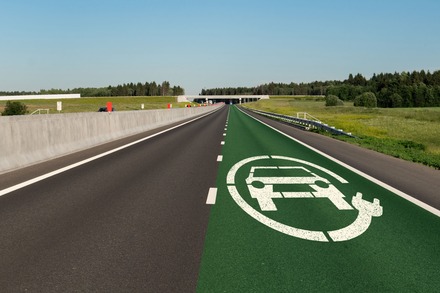Gaining an Advantage in the EV Charging Land Grab

The growing number of EV sales, combined with new local and national government incentives (such as NEVI in the USA), are fueling the race to identify prime locations for EV charging stations. We are now witnessing an EV charging “land grab” frenzy unfolding before our eyes, which will determine who will be the industry leaders. In this piece, we will discuss how locations are prioritized and how it is possible to overcome electrical grid deficiencies and limitations to accelerate charging station rollout.
Evaluating Locations
There are multiple criteria used to prioritize one location over another. For instance, developers and charge point operators (CPOs) map out coverage gaps (the distance from other EV charging stations), proximity to high-turnover restaurants, big-box retail stores, existing gas stations, and highway exits.
The electrical infrastructure to operate ultra-fast (150kW or higher) EV chargers is an important consideration. Drivers want a quick charge, so the charging location needs a robust utility grid connection capable of providing the necessary power for a 10-15 minute charge. Grid upgrades, however, are costly and can take years, leading developers to pass over attractive charging locations that lack sufficient power.
Boosting Past Grid Limitations
But what if a solution could overcome these limitations and provide the power requirements of ultra-fast chargers? Such a solution could accelerate rollouts of chargers at prime locations, defer investments by providing reliable power for months or years until the utility grid is upgraded, and then be relocated to another site once the upgrade is complete.. This solution would allow developers and operators to roll out ultra-fast chargers in places others can’t and deliver a significant advantage in the “land grab” race.
This solution is called a “power booster” and is available for deployment today by forward-looking developers. Power boosters store energy during idle times and then deliver an energy burst when an EV is plugged into a connected ultra-fast charger. It is usually based on energy storage technologies like batteries or more power-oriented devices like flywheels.
For example, if 25 EVs are charged per day, each requiring 150 kW for 10 minutes of charge, a 150 kW high-energy burst is required for about 25 x 10 = 250 minutes a day (roughly four hours), while the rest of the day is available for replenishing the booster between charges.
Kinetic Power Boosters
Based on patented flywheel technology, the ZOOZTER™-100 power booster stores energy in battery-free mechanical flywheels that store available energy from the grid at a charging site and are quickly “flushed” to provide the energy boost when an EV plugs in. They have a significantly longer lifespan of a 15-year lifetime with no degradation, providing over 200,000 charge/discharge cycles, and are produced, operated, and eventually recycled with minimal carbon footprint, with no use of chemicals or rare-earth materials.
Dynamic Deployment
ZOOZ power boosters can be quickly deployed and re-deployed (at the next site) when necessary. CPOs can deploy a ZOOZ power booster in a matter of days. The booster immediately provides the required power and can bridge the time gap until the power grid is upgraded or even defer the upgrade. This allows a convenient match between EV charging demand and power delivery capacity.
A developer/CPO that owns multiple power boosters can deploy them dynamically in sync with an accelerated rollout plan of charging stations. Such an owner can also quickly react to changing market conditions. For instance, if a charging site suddenly experiences a significant uptick in EV charging demand, the operator can deploy an additional power booster to quickly scale and continue to provide the best service to their EV customers.
The EV charging land grab is happening today. Once prime locations are gone, they are gone. Innovative solutions such as the ZOOZTER™-100 power booster allow developers and CPOs to execute faster, intelligent deployments, removing the dependency on electric utility providers.

